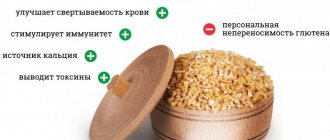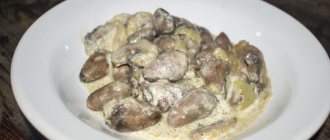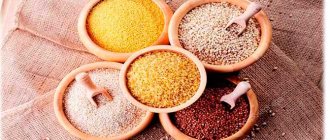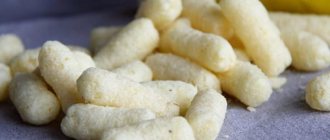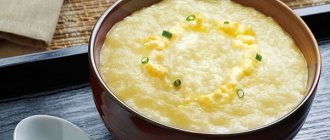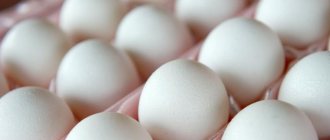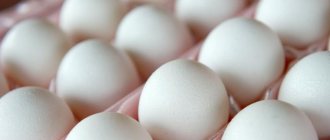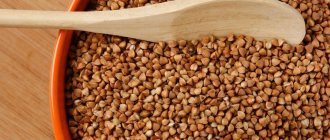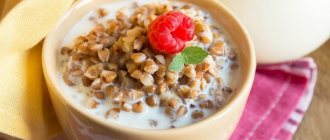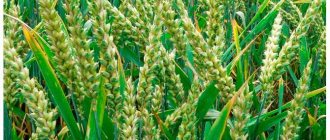What is bulgur
Bulgur is a cereal grain that is used as a staple food. This product is used to control blood sugar levels. Nutritionists highly value bulgur ( calorie content 346 kcal). Wheat product is rich in protein, iron, magnesium and fiber, so it is included in the daily diet menu.
Bulgor is generally available in four grain sizes: fine, medium, coarse and whole grain. Different sizes of this cereal are used for specific purposes. Finely ground burgol is used to make hot cereal for breakfast or added to dessert.
Medium is preferred for salads, stews, baked goods, and veggie burgers. Coarsely chopped varieties can be used for pilaf, casseroles, minced meat and salads. Whole grains are added to baked goods or in soups and stews.
Bulgur: what kind of grain is it?
This cereal is very popular in Eastern countries - Syria, Turkey, Palestine, Israel. And it is obtained from durum wheat, by heat treatment, then drying, removing the bran and only then mechanical grinding.
Moreover, the degree of grinding varies. Coarsely ground grain (called “Pilavlik”) is suitable for preparing soups and main courses, while finely ground grain (“Koftelik”) is ideal for salads.
High-quality bulgur has a golden color and a very pleasant nutty flavor, similar in appearance to rice. It doesn’t take long to prepare it, since the cereal has already undergone primary heat treatment.
Composition and calorie content of bulgur per 100 grams
The basis of the cereal is vitamins. Among them are:
- B9 (folic acid) – 27.0 mg;
- B4 (choline) – 28.1 mg;
- B3, PP (nicotinic acid) – 5.1 mg;
- B6 (pyridoxine) – 0.3 mg;
- B1 (thiamine) – 0.2 mg;
- B2 (riboflavin) – 0.1 mg;
- B5 (pantothenic acid) – 0.1 mg;
- K –1.9 mcg;
- E – 0.1 µg.
100 g of bulgur contains the following minerals and trace elements:
- potassium (410 mg);
- copper (335 mg);
- phosphorus (300 mg);
- magnesium (164 mg);
- calcium (35 mg);
- sodium (17 mg);
- iron (2.46 mg).
Composition and of dry and bulgur in water with and without oil per 100 g:
| Raw product | Boiled product without oil | Boiled product with oil | |
| Squirrels | 12.7 g | 2.14 g | 2.7 g |
| Fats | 1.5 g | 0.2 g | 3.2 g |
| Carbohydrates | 70.6 g | 15 g | 12.7 g |
| Calorie content | 339-364 kcal | 83 kcal | 101.9 kcal |
Fact! Two cups of cooked bulgur contain more than 10 grams of fiber.
Calorie content and composition
The calorie content of bulgur is 342 kcal per 100 grams of raw cereal. But in its finished form, the figure decreases significantly - for a boiled product the figure is 83 kcal, since the cereal increases in volume during cooking.
In terms of the ratio of BJU, bulgur contains:
- 12.3 g protein;
- 1.3 g fat;
- 57.2 g carbohydrates.
The chemical composition of cereals is rich in vitamins:
| Vitamin | Useful action |
| Retinol | The fat-soluble vitamin is necessary for normal vision and strong bones, skin rejuvenation and hair strengthening, and helps strengthen the immune system. Participates in redox and metabolic processes and protein production |
| Folic acid | Participates in cell regeneration and growth, necessary for normal pregnancy and intrauterine development of the fetus. Normalizes hormonal levels, supports the immune system and the functioning of the heart muscle, heals the liver and other organs of the digestive system, relieves the effects of stress |
| Pyridoxine | Ensures normal absorption of proteins and fats, prevents nervous disorders and dermatological diseases, and slows down aging. Relieves muscle spasms and cramps. Removes excess fluid from the body |
| Pantothenic acid | Stimulates the synthesis of glucocorticoids, necessary for the treatment of arthritis, gout, colitis, allergic and heart diseases. Slows down aging, normalizes redox processes, strengthens the immune system and improves the absorption of other vitamins |
| Riboflavin | Participates in the process of hematopoiesis and is necessary for the normal functioning of the reproductive system. Heals skin, nails and hair. Normalizes thyroid function |
| Thiamine | It has an antioxidant effect, participates in metabolic processes, and improves the functioning of the nervous system. Necessary for normal development of bone tissue, supports the activity of the heart muscle |
| Tocopherol | It has a strong antioxidant effect and prevents early aging. Improves immunity and regeneration processes, strengthens blood vessels, prevents the formation of tumors, enhances performance |
| Phylloquinone | Normalizes blood clotting, prevents the development of osteoporosis and vascular calcification, stimulates bone tissue growth |
| Niacin equivalent | Dilates peripheral vessels, activates blood circulation and prevents the formation of blood clots. Participates in the processes of hematopoiesis and the synthesis of food enzymes, eliminates bad cholesterol |
Bulgur also contains a lot of useful minerals:
| Mineral compounds | Beneficial effect provided |
| Sodium | Normalizes water-salt metabolism, stimulates digestion and appetite, has a vasodilating effect |
| Potassium | Necessary for the normal functioning of the heart muscle and nervous system, improves the absorption of magnesium. Relieves allergic reactions, important for muscle contractions |
| Iron | Stimulates the immune system, participates in the synthesis of hemoglobin and thyroid hormones, necessary for the absorption of B vitamins |
| Zinc | Takes part in the process of growth and development of bone tissue, prevents the formation of diabetes and epilepsy, has a wound healing effect, improves brain function |
| Calcium | Necessary for healthy bones and teeth, normal functioning of the nervous system, has anti-allergic and anti-inflammatory effects |
| Magnesium | Required for the normal functioning of muscles and the nervous system, participates in the conversion of glucose into energy, and prevents the formation of stones. Regulates the functioning of the heart and endocrine system |
| Phosphorus | Stimulates bone growth and maintains their health, participates in metabolic reactions and protein synthesis, is necessary for muscle and brain function |
| Copper | Participates in the process of hemoglobin synthesis, cell growth and the synthesis of certain hormones |
| Manganese | Prevents the development of diabetes mellitus, regulates the amount of blood glucose, normalizes brain function, participates in the synthesis of cholesterol, promotes the growth of bone and cartilage tissue |
| Selenium | Improves immunity, has an antitumor effect, stimulates metabolic and reproductive processes, has a positive effect on the condition of hair and skin. |
Properties of bulgur
Bulgur - benefits and harm for the body. Cereals are rich in slowly digested, complex carbohydrates. It contains a huge amount of protein and low fat. Potassium is a mineral that promotes heart function, strengthens bones, and helps in muscle contraction. One glass of cereal contains 124 mg of potassium.
Zinc is an essential mineral that helps protein synthesis, immunity, and cell division. One glass of cereal contains a little more than 1 mg of zinc. Vitamin B3, which is found in burgol, helps break down proteins and fats for energy.
Benefit
The effect of burgol on the body:
- Has an anti-inflammatory effect.
- Reduces the likelihood of developing metabolic syndrome (obesity, high blood pressure).
- Eating bulgur grains daily reduces the risk of developing type 2 diabetes.
- Relieves constipation and cleanses the digestive tract.
- Serves as a prevention of cholelithiasis, heart attack, stroke, heart and kidney failure.
- Reduces the risk of cancer. The insoluble fiber in bulgur helps protect against breast cancer, which is why women are advised to include this product in their diet during menopause.
- Helps in the formation of connective tissues and proper blood clotting.
- Regulates blood pressure.
- Struggling with excess weight.
- Protects children from developing diseases such as asthma.
For diabetes
It is recommended to take the cereal as a main dish or add it to salads. It should be boiled in water (ratio 1x3), a little salt is allowed. The porridge should be crumbly. Cutlets or meatballs are made from it, and it serves as an ingredient in first courses.
It is not recommended to abuse this product for type 2 diabetes, and it is better to exclude it from the diet.
Attention! The maximum amount of bulgur eaten per week should not exceed 2 times.
For pancreatitis
In case of exacerbation of the disease, the use of bulgur is prohibited. This is explained by the fact that the dietary fiber contained in this cereal irritates the mucous membrane of the digestive organs, as a result of which the inflammatory process increases and spasms occur in the pancreas ducts. Irritable intestines provoke the appearance of increased gas formation, colic, and nausea.
If a person has a chronic form, then doctors recommend consuming bulgur 7 days after the symptoms of irritable bowel syndrome disappear. The daily norm is 150-200 g of ready-made food. It is allowed to consume this cereal only in boiled form (in water or vegetable broth) 2 times a week.
Important! To prepare porridge (1 serving) you need 40 g of bulgur. It expands well during cooking.
For gastritis
If a person has gastritis during an exacerbation, then bulgur is also contraindicated. During any other phase of the disease, consumption of this cereal is permitted.
When gastritis occurs in combination with high acidity, cereals must be cooked only in water and consumed in a viscous form (using a sieve or blender) 3-4 times a week.
For cholecystitis
Bulgur is allowed for this disease in the form of vegetable soup or porridge with milk. Doctors recommend eating small portions often and not using fat (lard, butter and vegetable oil) when preparing this cereal, and not overusing spices.
Attention! For all gastrointestinal diseases, consume bulgur only warm.
Possible harm and contraindications
Bulgur has many positive properties, but it can also be harmful to the body. Cereals contain gluten (an allergen), which not all people can process, so the use of this product is contraindicated for them.
During the diet, you can eat this cereal no more than 3 times a day in small portions. If a person begins to suffer from flatulence, diarrhea, weakness and other unusual symptoms, then one should immediately abandon bulgur. This may be a sign of an allergic reaction to gluten.
Cereals are contraindicated for consumption during periods of exacerbation of pancreatitis or gastritis and other inflammatory processes of the stomach, as well as for type 2 diabetes mellitus.
Contraindications and harm
Bulgur can be harmful to people with gluten intolerance and grain allergies. Otherwise, it is a safe product if consumed in moderation.
Pregnant women, as well as people suffering from gastritis and stomach ulcers, should reduce their intake of porridge to once a week.
For those who have never tried bulgur dishes, we recommend being careful and observing the body’s reaction. Porridge can cause intestinal upset and flatulence.
Proportions and cooking features
Bulgur is usually boiled, like rice or other grains, but it can also be fried or baked with vegetables. Because this product is already partially cooked, it takes less time to cook than other whole grains and has a longer shelf life. You also don’t have to rinse the cereal before cooking, unless indicated on the package.
When cooking cereals, maintain a ratio of 1 to 2 and pour it into boiling water and continue cooking for 15 minutes. Then the fire is turned off and the pan is wrapped in a warm towel or blanket. There is another method of preparation: the cereal is first fried in boiling oil and then boiled. This option will give the dish a nutty flavor.
Bulgur goes well with stewed meat, vegetables (carrots, cucumbers, radishes, sweet peppers, onions), raisins, tomatoes, beans, walnuts, spinach.
Chemical composition
Cereals are very well absorbed by the body, and with it we receive a storehouse of vitamins and microelements.
Cereals contain dietary fiber, saturated fatty acids, ash, poly- and monosaccharides.
The most common vitamins are B Vitamins, Vitamins K, E and PP.
Mineral substances can be distinguished: phosphorus, potassium, calcium, magnesium, iron, copper, zinc, selenium. Moreover, there is twice as much phosphorus as in semolina, and more calcium than in buckwheat.
BZHU cereals per 100 gr. – proteins (12.3 g), carbohydrates (75 g), fats (1.3 g). Bulgur contains a lot of carbohydrates, but these are slow carbohydrates that will not lead to weight gain and will not cause sudden spikes in sugar.
Delicious and healthy recipes
Porridge
Ingredients:
- 150 g cereal;
- 300 ml milk;
- 200 ml water;
- 180 g apples;
- 45 g dried apricots;
- 55 g butter;
- salt and sugar (to taste)
Preparation:
- Using butter, draw a line across half of the multicooker bowl. This is the limit for milk.
- Place the rest of the butter on the bottom.
- Turn on the multicooker to the “Frying” or “Baking” mode.
- Place the bulgur in the bowl and fry it for 3 minutes.
- Mix milk with water (it must be boiled) and pour in the cereal. Salt, add sugar. Select a program for cooking porridge. Cooking time: 20 minutes.
- While the porridge is preparing, pour hot water over the dried apricots for 10 minutes. Squeeze and chop with a knife.
- The apple must be washed, blotted from moisture with a napkin, peeled and cored, and grated on a fine grater.
- Place the prepared dried fruit and apple into the slow cooker and mix.
- Set the “Heating” mode for 25-30 minutes.
Children eat this porridge with pleasure.
Fact! It is recommended to introduce bulgur into a child’s diet no earlier than 2 years.
Flavorful bulgur side dish
Ingredients:
- bulgur – 150 g;
- water – 0.5 l;
- tomato paste – 2 tbsp. (without slide);
- dried vegetables – 50 g;
- dried mint – 1 tsp;
- dried basil – 1 tsp;
- paprika – 2 tbsp;
- greenery.
Preparation:
- Pour the bulgur into the container, add salt and cook for 20 minutes.
- Add spices: tomato paste, dried vegetables, mint, basil.
- Serve the dish hot or warm with finely chopped herbs.
Vegetarian pilaf with eggplant
Ingredients:
- bulgur – 1.5 cups;
- onions – 2-3 pcs.;
- carrots – 2-3 pcs.;
- eggplant – 2-3 pcs.;
- bell pepper – 3 pcs.
- garlic – 4 cloves;
- fresh herbs;
- salt, pepper (to taste).
Preparation:
- Fry finely chopped onion over low heat with a small amount of oil.
- Chop the carrots in a convenient way and saute with onions.
- Transfer the onions and carrots to the cauldron.
- Cut the eggplant into cubes, finely chop the bell pepper and fry over high heat. Transfer to a cauldron.
- Simmer vegetables in olive oil with spices for 3-5 minutes.
- Add bulgur to the cauldron and stir thoroughly.
- Pour the contents of the cauldron with 2 cups of hot water and cover with a lid.
- Place the cauldron in a preheated oven (180°) for 15 minutes.
- Serve the dish hot with finely chopped herbs.
Bulgur salad: a simple and tasty recipe
Ingredients:
- cucumber – 2 pcs.;
- tomato – 3 pcs.;
- onions – 1-1.5 pcs.;
- boiled chickpeas – 1/2 cup;
- bulgur – 1/2 cup.
- lemon juice – 2 tbsp;
- fresh herbs;
- salt pepper.
Preparation:
- Pour the cereal into a glass container and pour 2-2.5 cups of boiling water, cover with a lid and let it steam for 30 minutes. Cool.
- Chop all the vegetables, place them in a bowl along with the chickpeas, season with lemon juice, mix well.
- Beat the bulgur and add it to the vegetable mixture and stir.
- Salt, pepper, add herbs and mix.
Soup with bulgur and lentils
Ingredients:
- bulgur – 100 g;
- lentils – 100 g;
- tomatoes – 200 g;
- vegetable oil – 1 tbsp;
- spices.
Preparation:
- Rinse the lentils well with water. Soak it in cold water for 3-5 hours. If the lentil variety is hard, then it is soaked for 10 hours.
- Place the prepared lentils in a saucepan, add water and bring to a boil.
- Fry the bulgur in vegetable oil for 2-3 minutes. Add chopped tomatoes, salt and pepper and simmer covered for 5 minutes.
- Transfer all ingredients from the frying pan to the saucepan, add water. As soon as it boils, remove from heat.
- Serve hot with herbs. You can add sour cream.
Quail soup
Ingredients:
- quail – 1 pc.;
- onions – 2 pcs.;
- carrots – 2 pcs.;
- potatoes – 6 pcs.;
- bulgur – 200 g;
- quail eggs – 12 pcs.;
- bay leaf – 2 pcs.;
- salt, pepper, herbs, spices.
Preparation:
- Boil quail broth, add bay leaf, salt and pepper.
- Cut the potatoes and put them in the broth.
- After 15 minutes add bulgur.
- At this time, boil the eggs.
- Serve the soup with herbs and 2 quail eggs, previously cut in half.
Pumpkin and shrimp soup with bulgur
Ingredients:
- pumpkin – 1/2 part;
- fresh thyme – 2 bunches;
- carrots – 2-3 pcs.;
- onions – 2-3 pcs.;
- bulgur – 3 tbsp;
- cream 20% - 0.5 cups;
- coconut milk – 2.5 tbsp;
- chicken broth – 2 l;
- white wine – 5 tbsp;
- shrimp – 2 pcs.;
- garlic – 2-3 cloves;
- honey – 1-1.5 tbsp;
- chili pepper - half;
- salt, pepper, spices (to taste).
Preparation:
- Peel the pumpkin and cut into 5x5 cubes. Place in a saucepan, add sugar, and pour wine. Add 2 sprigs of thyme, spices, garlic, honey. Cover with foil and place in a preheated oven at 150° and bake for 40 minutes.
- Cut the carrots and onions into strips and fry in a frying pan until golden brown.
- Remove the prepared pumpkin from the oven, add the roasting mixture, and pour in the prepared broth. When it boils, add cream.
- Cook the bulgur over low heat for 20 minutes. (calculation of cereals to liquid: 1x2).
- When the broth boils, remove the pan from the heat and beat with a blender.
- Cut the shrimp in half, fry them in hot olive oil, add chili pepper.
- Serve the soup hot with shrimp and herbs.
Benefit
Bulgur will be useful for both adults and children.
1. Helps strengthen the immune system.
2. It is able to cleanse the body of waste and toxins, normalizes metabolism, which promotes weight loss without strict diets.
3. In combination with fruits and vegetables, bulgur porridge will saturate the body with all the necessary vitamins and minerals.
4. It will help normalize the functioning of the nervous system, improve sleep, relieve anxiety, irritability and fatigue.
5. Calcium will strengthen tooth enamel, bone tissue, and nails.
6. Porridge gives you a feeling of fullness for a long time, normalizes cholesterol, hemoglobin and blood sugar levels. The glycemic index of bulgur is 45 units, which is acceptable for diabetes.
7. Helps normalize digestion and eliminate constipation, which reduces the likelihood of intestinal cancer.
Cereals of various grinds
How is bulgur used in cosmetology?
This product is also used in cosmetology. It is an ingredient in masks and scrubs. Masks have a rejuvenating effect and get rid of the first wrinkles. Scrubs are used to combat cellulite. For facial skin, bulgur is used only in boiled form.
Scrub for cellulite
Mix 100 g of fine or medium-ground cereal with 50 ml of olive oil. Apply to thighs. Hold for 5 minutes. Massage for 10 minutes and rinse with running water. Do this scrub every other day in a course (10-15 times).
Fact! It is better to do the scrub after a sauna or hot bath so that the skin is steamed.
Mask
Boil bulgur in milk (100-150 ml), cool. Add 1 yolk, 1 tsp honey. Mix the ingredients until smooth, apply to face and décolleté for 20 minutes, rinse with running water. You can use the mask daily for 12 days. Afterwards a break is taken for a month, then the course is repeated. The same mask can be applied to your hands.
How to cook bulgur
The use of this cereal in cooking is very diverse. You can replace rice with bulgur and make delicious pilaf. Due to the fact that the cereal has already undergone preliminary heat treatment, the grains remain dense and the pilaf turns out crumbly.
Bulgul is a very good side dish that can be served with fish, meat, and poultry. This cereal, together with minced meat, is suitable for stuffing eggplants, bell peppers, and tomatoes. Salads and dolma are prepared with it.
Can be added to first courses, only a very small amount. It’s better to cook it at once, as the cereal swells greatly and the soup turns into porridge.
Bulgur is combined with vegetables, mushrooms and herbs. Any spices and herbs are suitable. You can safely add basil, curry, garlic, oregano, marjoram, thyme, paprika. Try and experiment!
I recommend preparing:
Bulgur - 10 most delicious cooking recipes
Features of storing cereals
year when unopened . After opening the package, the bulgur should be poured into an airtight glass container and placed in a dark, dry place. Store in this form for no more than 4 months.
Bulgur is sure to satisfy most of the basic needs of the body due to its rich chemical composition. It replaces rice well in pilaf and is an ingredient in salads and first courses. It can also be used instead of breadcrumbs for meatballs. Wheat in this form goes well with vegetables, chopped fresh and dried herbs, olive oil and lemon juice. Cereals give healthy skin.
The benefits and harms have been proven . The inclusion of this cereal in the diet should be correct and gradual. Children can be given cereals from the age , when the digestive system is already mature to process gluten. People with gastrointestinal diseases should use bulgur with caution and consult their doctor before use.
Bulgur during pregnancy and breastfeeding
This cereal will provide the expectant mother with a valuable vitamin - folic acid, which is especially necessary for a woman during this period.
In the first trimester, it is advisable to consume porridge no more than 2-3 times a week, and in the last months of pregnancy it is better to reduce the amount of fiber so as not to provoke flatulence.
During breastfeeding, consuming bulgur is prohibited; it is better to replace it with gluten-free porridges, for example, buckwheat or corn. You can start including bulgur in your diet no earlier than three to four months after giving birth. It is better to cook with water without salt and sugar, you can add a piece of butter.
For children
Harm of bulgur
However, for some categories of people, bulgur can be harmful, and not just harmful, but deadly!
We are talking primarily about those people whose digestive system is not able to digest gluten. Celiac disease is the name of this disease. Naturally, people with celiac disease understand that they cannot eat gluten. However, there are many people who do not even suspect that gluten regularly spoils their digestion, causing flatulence, weakness and an irresistible desire to sleep after eating.
On top of that, such a beneficial quality as the abundance of fiber classifies bulgur as a dangerous product for people with gastritis and other gastrointestinal problems during periods of exacerbation.
We have already talked about overeating, but an additional reminder will not be superfluous (pardon the pun). Bulgur is not a low-calorie food and, when overeated, still leads to the conversion of complex carbohydrates into fatty tissue. So control yourself...
How to select and store
It’s unfortunate, but despite having a wide range of beneficial properties, bulgur has one very significant drawback. It is not produced in Russia, as well as in other post-Soviet states. Therefore, if you decide to purchase a package of domestic bulgur, you risk getting something that only vaguely resembles this unique grain. As a rule, high-quality bulgur is produced in Turkey and other eastern countries.
Please read the packaging carefully. It must be absolutely intact. It is best if the cereal is packaged in transparent cellophane - this way you can conduct a visual inspection of the contents of the container. There should be no foreign impurities. High-quality cereals should not be sticky.
At home, pour the bulgur into a glass, hermetically sealed container. To prevent insects from infesting the cereal, it is better to play it safe and warm it up in the oven before doing so.
Who is bulgur contraindicated for?
After such brilliant characteristics, it seems that cereals cannot cause harm to the human body. Oddly enough, this wonderful product has contraindications.
The reason is the high content of gluten - a complex combination of essential amino acids. Gluten is mainly dangerous due to complications in the gastrointestinal tract. The consequences can be very different: from simple indigestion to stomach colic. Therefore, bulgur, like all products with a high gluten index, is not recommended for people with chronic stomach diseases. Patients with celiac disease, of course, should not eat bulgur.
Use in cooking
It is used in cooking as a side dish for meat and fish dishes, added to soups, salads, stuffed with cereal into vegetables and used to prepare some desserts.
Traditional way of preparing an oriental product:
- Pre-fry in butter until a nutty aroma appears;
- Then add a glass of boiling water and stir until the water is completely absorbed;
It is important to remember that in order to cook bulgur properly, it is not recommended to rinse it before or after frying.
There are different types of cereals, depending on the degree of grinding: coarse, medium and fine. The finely ground product is eaten without cooking, only by soaking and frying.
It is not recommended to combine with raw potatoes, white cabbage, chicken eggs and dried fruits. Using cereals and dried fruits in the recipe begins the fermentation process, which can lead to flatulence and bloating. Adding tarragon to a dish makes the food bitter and overpowers the nutty flavor of the bulgur.
Energy value
The indicators among other cereals are optimal: the calorie content of bulgur per 100 grams is 360 kcal, with a low glycemic index. Thus, porridge provides a quick and long-lasting feeling of fullness.
% of daily value
The average daily caloric intake for men ranges from 2200 to 2800 kcal, for women - from 1800 to 2200 kcal. Thus, 100 grams contains only about 13% of the daily intake for men and about 17% of the daily intake for women. A standard 200 gram portion of a side dish of cereal will definitely not harm your figure and metabolism. In addition, the beneficial properties of cereal are revealed by any method of preparation.
How many calories boiled bulgur contains in the end depends on the cooking method. Before cooking, cereals require soaking or frying.
Bulgur and diet
In a dietary diet, the main criterion for using bulgur is its proper preparation. In Eastern countries, cereals are prepared using large amounts of vegetable or butter, and this method is definitely not suitable when following a diet.
The only and correct way to prepare bulgur is soaking. The cereal must be poured with warm boiled water until it swells completely. Soaking time depends on the size of the grains. If the grain is finely ground, then soaking time will be required less than for large grains.
After complete swelling, bulgur is ready to be added to salads and various dishes. To diversify your diet menu, you can mix cereals with herbs or wrap them in lettuce leaves. The result is an original and absolutely dietary dish. Dolma prepared with the addition of bulgur is also ideal for this type of nutrition. An amazing combination of grape leaves and cereals will make the taste of the dish unique.
